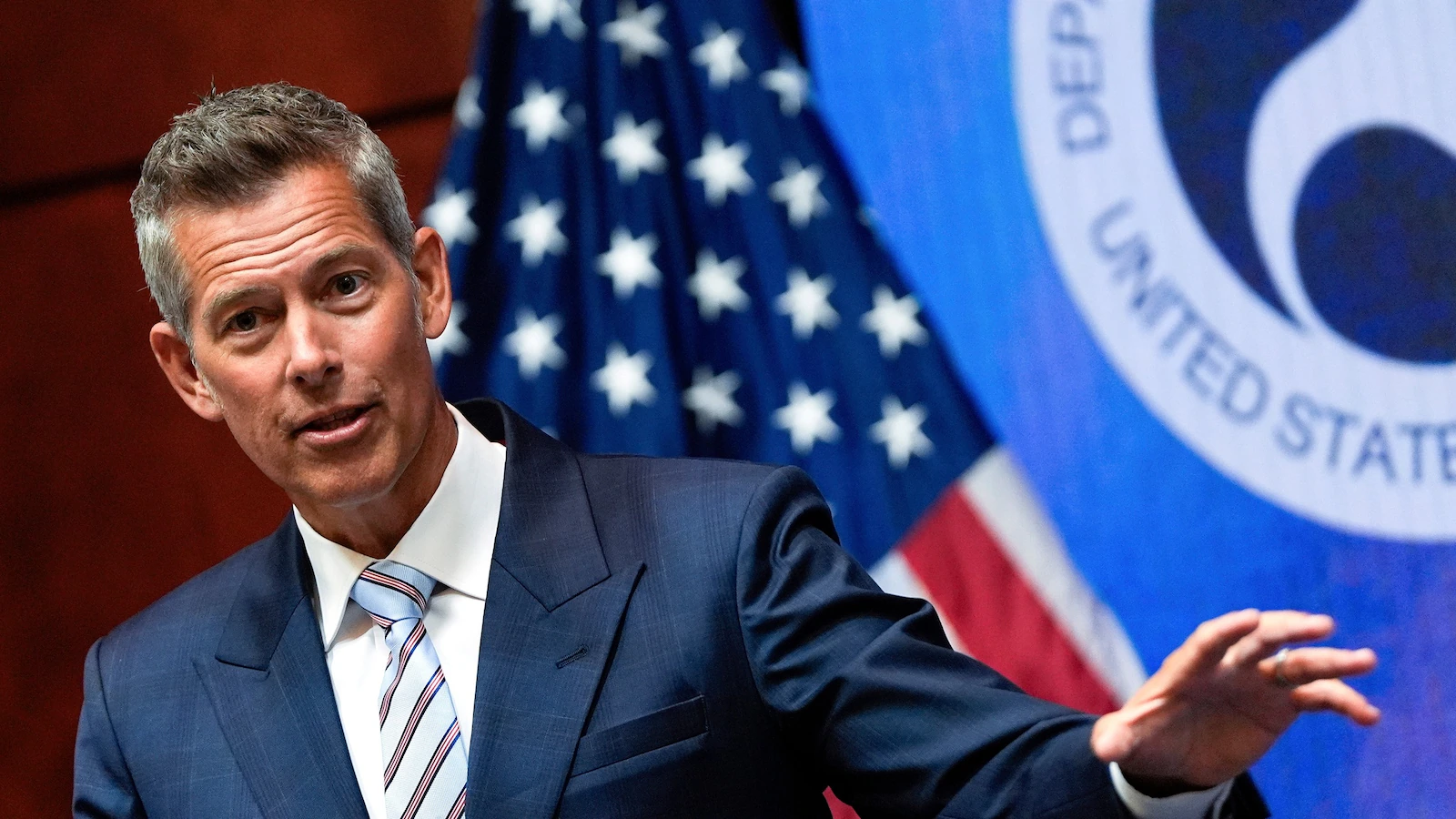Copyright ABC News

Earlier this week, Transportation Secretary and NASA acting administrator Sean Duffy suggested that SpaceX may not be the first American company to return the space agency's astronauts to the moon. NASA's Artemis III mission, which will land astronauts on the moon for the first time in more than 50 years, is currently scheduled for mid-2027. However, Duffy said the company is currently facing delays and that the agency may look to other companies to help reach the moon. "I love SpaceX; it's an amazing company. The problem is, they're behind. They've pushed their timelines out, and we're in a race against China," Duffy said on CNBC's "Squawk Box" on Monday morning. "The president and I want to get to the moon in this president's term, so I'm gonna open up the contract," he continued. "I'm gonna let other space companies compete with SpaceX, like Blue Origin. Whatever one can get us there first to the moon, we're gonna take." SpaceX won a contract with NASA in 2021 to develop and demonstrate a crewed lunar lander accompanied by Starship, which is the most powerful rocket ever built. Despite some successful test flights, Starship has had a series of high-profile setbacks. Space experts told ABC News that there are many reasons why development has been delayed and that it's unlikely another company could step in for SpaceX and still hit the 2027 goal. What is delaying the program? Pablo de León, professor and chair of the department of space studies at the University of North Dakota, told ABC News it appears that NASA's argument is that SpaceX is not hitting deadlines and goals that were set in their contract. He said he can understand the urgency of the government to move the process along but added that he knows people within SpaceX working on the lunar lander and that they are moving as quickly as they can. "When you look at one of these Starships, the size, it's really a marvel of engineering that these vehicles can be put together in such a short time," de León said. "So, I really don't think that they can go any faster than what they are doing right now." He said it appears Starship has the capability to reach between 62,000 to 93,000 miles currently, but the moon is nearly 250,000 miles from Earth, so more work is needed. De León added that SpaceX needs to conduct more testing including safety testing and making sure it can communicate with the Orion capsule, which will be the spacecraft that will carry the astronauts to and from Earth. Starship will also need to be refueled in orbit, something SpaceX hasn’t yet shown it can do successfully. In contrast to the Apollo program that saw six lunar landing missions in the 1960s and '70s, during a space race and the Cold War with the Soviet Union, space science experts said there is far less funding -- and fewer personnel -- working on the Artemis program. "First of all, we're not spending 5% of the U.S. federal budget on space, which we were in the 60s," Greg Autry, associate provost for space commercialization and strategy at the University of Central Florida, told ABC News. "We're spending about 0.3-something percent, an order of magnitude less than we were at the height of the 60s." Autry is President Donald Trump's nominee to be the chief financial officer of NASA. He added, "Second of all, we're trying to do something much more ambitious, which is return to the moon to stay and develop both commercial and NASA systems that will contribute to a permanent presence on the moon. We're not just going there with two people for several hours and coming home. It's an entirely more ambitious thing." Another factor is NASA's goal of trying to reach the south pole of the moon, which is a far more difficult environment to land in compared to the equatorial regions of the moon where past missions have landed, Autry said. Could SpaceX be replaced? It's not clear if or when NASA would amend its contract with SpaceX or if the space agency would switch to another company, like Blue Origin. Blue Origin, founded by Jeff Bezos, signed a contract with NASA in 2023 as the second lunar lander provider for the future Artemis V mission to the moon. Experts previously told ABC News that if SpaceX were to be replaced by Blue Origin, more funding and resources would need to be poured into ramping up that company's technologies because SpaceX is further along in being able to launch astronauts into space and return them safely to Earth compared to Blue Origin. De León said it is unlikely that any other company, such as Blue Origin or Lockheed Martin, would be able to step into the role held by SpaceX and meet the 2027 goal. He added that he believes Artemis III is not likely to happen until 2029 regardless of whether NASA decides to stick with SpaceX for the Artemis missions or to move on and pick Blue Origin or another company "It will be very hard to do a landing by 2027," he said. "We are already near the end of 2025, and they will need some unmanned testing. They will need a mission like Artemis II that includes just circumnavigating the moon without attempting the landing like it was done during Apollo 10, for example." Artemis II, whose rocket, and upper stage was built by Boeing and whose crew capsule was built by Lockheed Martin, is scheduled to send four astronauts to the moon as early as February 2026. The astronauts will orbit the moon but not land during that mission. "And finally we don't want to risk the life of the astronauts before the system has been tested properly. That's going to take at least two, three years. That will put us very close to the deadline that the Chinese said that they were going to land their own astronauts," De León continued. Space race against China NASA may be trying to speed up the timeline for Artemis III due to a potential race against China, the experts said. Chinese officials have said their astronauts are aiming to land on the moon in 2030. Autry told ABC News that the possibility of competing with China should incentivize the U.S. to work harder to remain first in the space race and to put more funding into space programs. De León said he thinks there are many people in the U.S. who do not view China as competition, saying the real race was beating the Soviet Union to the moon in the 1960s. However, he said it would be an embarrassment for the U.S. if China reaches the moon first this time around because it would result in the U.S. losing the prestige that it gained during the Apollo missions. "That means that 50-something years ago, [the U.S.] had the capability, and now we don't have it anymore. I mean, what have we doing for half a century?" de León said. "And talking about international prestige, the Apollo lunar landings inspired people from all over the world to study science and engineering, not only from the U.S." He added that it's possible China could set up an exclusive economic zone or exclusive mining zone on the moon if Chinese astronauts land first, which could inhibit the U.S. from setting foot in the same locations. "What will it mean for the leadership of the United States as a beacon of development, of scientific and technological development in the world?" de León said. 'I wish that the people that are in the government and the people that are in NASA [would] ... see the need of urgency for the U.S. to remain leader in space, not necessarily only for the tangible wins, but also for the intangible ones."



